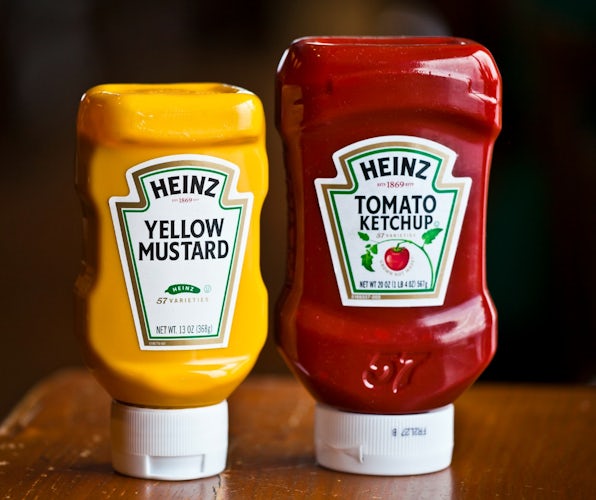Asos, Halifax, Lush: 5 things that mattered this week and why
Catch up on all the marketing news from the past week including Lush’s decision to shut its social media accounts in the UK, Foster’s bringing back ‘Good call’ and Halifax revamping its brand to see of the fintech upstarts.

Lush abandons social media in bid to ditch the algorithms
Lush has a reputation for doing its own thing. Whether that’s leading on ‘naked’ plastic-free packaging, creating 100% vegetarian products or promoting social activism, the ethical beauty retailer is well known for choosing not to follow the crowd.
Never was that more apparent than on Monday, when Lush UK revealed it would be leaving Twitter, Instagram and Facebook over the next week in a bid to establish stronger connections with consumers and free itself from the tyranny of algorithms.
In a statement, the brand explained: “Increasingly, social media is making it harder and harder for us to talk to each other directly. We are tired of fighting with algorithms, and we do not want to pay to appear in your newsfeed. So we’ve decided it’s time to bid farewell to some of our social channels and open up the conversation between you and us instead.”
Going forward, UK consumers will be encouraged to speak to Lush via live chat on the website, over email or by telephone. The individual shops will, however, maintain their personal accounts and content will still be posted on social using #LushCommunity. Lush North America was keen to distance itself from the decision, reassuring followers it had no intention of quitting social.
Whether it is a protest against the digital duopoly, a genius data capture exercise or a genuine attempt to own the customer relationship without letting social media platforms get in the way, shoppers and marketers alike were left – in large part – baffled by the decision.
It recalled the move last April from pub chain JD Wetherspoon that it was quitting social media amid concerns over the “misuse of personal data” and “the addictive nature” of social.
Whereas Wetherspoons was walking away from 44,000 Twitter followers, the stakes are much higher for Lush. Not only does it have more than 1 million followers across its social platforms, the fact remains that beauty brands receive the most user engagement on Instagram and Facebook, second only to fashion, according to Socialbakers data from 2018.
While only time will tell whether Lush will be the victim of its decision to shun social, it could well prove to be a risk too far. CR
READ MORE: Charlotte Rogers – Lush’s social media exodus is a risk too far
Asos needs a marketing reboot

It wasn’t too long ago that Asos was ruling the fast fashion roost. Now, the online retailer seems to be in a bit of a pickle, with pre-tax profits down 87% in the six months to the end of February to just £4m.
While Asos has blamed ongoing economic uncertainty that has “undermined” consumer confidence, as well as “exceptional” levels of discounting in the first quarter (like it did in the previous quarter with Black Friday), boss Nick Beighton admits Asos hasn’t been putting its best foot forward.
In addition to a major profit slump, Asos has also seen a decline in organic customer acquisition, traffic, awareness and buying consideration. This doesn’t look good for a brand looking to grow its international footprint.
The Asos brand is still strong, especially in the UK, and Beighton believes a big digital marketing push and doubling its investment in influencer activity, especially in the US, will help turn its fortunes around.
But consumers just aren’t shopping as frequently and impulsively as they once were. There are a myriad of reasons for that including financial ones as well as a growing awareness of sustainability, supply chain ethics and the impact their buying decisions have on the environment.
With so much choice out there (arguably too much) and given the current retail environment, it is going to take more than an “upweight” in digital marketing and increase in the “velocity of conversations with customers” to reverse those choppy tides.
Perhaps Asos is in need of a complete fashion reboot. EH
READ MORE: Asos ‘upweights’ digital spend as it puts focus on acquisition
Ad bombardment rings alarm bells

“I just love this ad that’s been following me around the internet for the past week based on something I searched out of vague curiosity two weeks ago!” said no one ever. And yet still brands insist on following people around the web and bombarding them with ads that are, let’s face it, making people hate advertising.
This week we have even more numbers backing up the fact that people are becoming more mistrustful and fed up with online advertising thanks to brands and their shoddy targeting.
54% of Brits object to being targeted based on their past online activity, 55% are completely apathetic towards advertising content, 70% say they see the same ads repeatedly and only 11% actually enjoy advertising, according to Kantar data.
Oh dear.
This is not the first time a warning has been sounded about the long-term damage brands are doing. Nor the second, nor the third. In fact, consumer trust in advertising has been declining steadily since the early 1990s.
So why are we still talking about it and when will brands learn that just because they can, doesn’t mean they should?
Of course, it all comes down to that moreish substance they call ‘data’, which has opened up a whole new world of marketing to brands. But the ability to reach people instantly and at scale has in many cases come at the expense of responsibility and creativity.
It’s not always the case that less is more. But in this instance, it is. The sooner brands realise that, the sooner they can begin to rebuild trust in advertising and stop pissing people off. EH
READ MORE: Ad saturation and over-targeting damaging people’s trust in brands
Halifax overhauls its brand to make it ‘more modern’
Marketing from the big banks has come a long way since the financial crash of 2008. Back then, the big brands were in fire-fighting mode, focused on holding on to what little reputation they had left rather than trying to build their brands.
Fast-forward 10 years and things have changed. Banks have arguably learnt from the financial crisis that they need to put customers first and are looking at more ways to do that. They also face growing competition from fintech upstarts – whether that’s Monzo, Starling or Atom – which are making the most of the fact they are doing banking differently and weren’t involved in the various scandals to have hit the sector over the past few years.
That means banks need to keep up. And Halifax is the latest to overhaul its brand to give it a more modern look and feel. It has a new logo and visual identity, as well as a new marketing campaign focused on the feel-good factor that comes with moving into a new house.
The campaign, created by adam&eveDDB, certainly feels more upbeat and current than the previous ads, which featured old cartoons including Top Cat and The Flintstones. And unlike at other brands which change up their advertising, there is little to fix at Halifax, with consumer perceptions of the bank remaining strong both in terms of brand metrics and the purchase funnel, according to YouGov BrandIndex. SV
READ MORE: Halifax modernises brand with relaunch – ‘We don’t want to be seen as the old guard’
Foster’s brings back Aussie agony uncles Brad and Dan
Foster’s is bringing back Aussie agony uncles Brand and Dan after a four-year hiatus to help combat the Brexit blues.
In 2015, Foster’s got rid of the pair because the brand needed to “evolve”, with Alan Clark, chief executive of SABMiller, telling the Guardian: “The world has moved on from lads telling jokes on a Saturday and high-volume consumption. Beer is now drunk by women and men together.”
So what’s changed? Well Brexit and Trump and lots of other really depressing stuff and now beer drinkers wan’t a break from being serious in favour of “Aussie optimism”.
Whether it’s Heineken promoting world peace or Peroni platforming art and fashion, in the last few years beer while many lager brands have tried to go more premium they’ve also become more serious. There is certainly room for a beer brand that doesn’t take itself or the category too seriously.
But Clark was right that the world has moved on from “lads telling jokes”. Any number of brands, from Lynx to Gillette, have realised this. Bringing back ‘Good call’ makes sense for its high awareness and effectiveness (it won the IPA Effectiveness Grand Prix). The key will be to ensure it works for the modern beer drinker. MF
READ MORE: Foster’s on why it’s bringing back ‘Good call’ after a four-year absence






